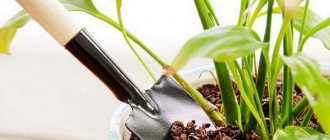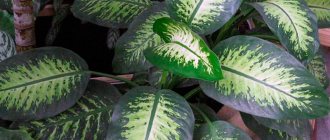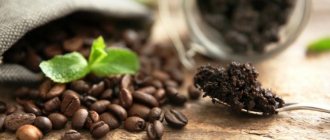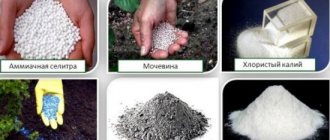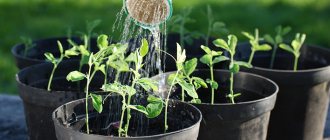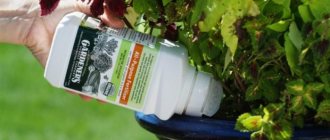All plant lovers know that our green pets love showers. It benefits them in many ways (including helping them fight pests). But few people know what plants can take hot
shower! It rids plants even better of many diseases and parasites, gets rid of dust, gives a shake, stimulates growth and saves plants that have begun to wither: you will see the effect on the same day!
This is a great awakening from winter hibernation.
Typically, a hot shower is used once a month. It’s not worth it more often, so as not to wash out nutrients from the soil (if more often, then only by covering the soil). It is better to carry out the procedure in the evening to leave the plants in the bathroom overnight.
The main thing is that the pot must have drainage and light soil so that the hot water does not stagnate. If the pot does not have a drainage hole, do not use hot water, or even water that feels warm to you. For plants without drainage, showering is only possible with cool water (like rain).
However, as a rule, all indoor plants are planted in pots with drainage holes, so there is no problem using hot water.
Half an hour before the procedure, be sure to water the plant generously. This can be done already in the bathroom. Let it sit after watering, and then wash it properly!
A hot shower can be arranged just for the trunk and foliage, covering the ground with a bag, or completely
, spilling the soil too.
Hot water removes all excess salts from the substrate,
therefore, this is
a real salvation
if you notice that the soil is covered with a salt crust, or if you realize that you have “overfed” the plant with fertilizers.
How hot is it?
Almost the same as for myself. The water should not burn your hand. Consider that you are preparing a shower for yourself: this temperature will also suit the plant. Hot
, nice shower!
The first procedures for indoor plants with a hot shower are best carried out at a water temperature of about 35-380C, and then from time to time you can increase the temperature by about another 5 degrees. But your hand should tolerate it well. Otherwise, there is a risk of scalding the roots.
The jet should not be too powerful.
Main settings
It is logical to assume that the requirements for water used for watering indoor plants are much more serious. It should be soft and slightly acidic, contain oxygen, macro- and microelements. There is a concept of hardness, which in everyday life usually means the concentration of magnesium and calcium ions. Of course, it is better to water the plants with salt-free water. It is known that boiling slightly reduces the concentration of harmful substances. Therefore, the question arises as to whether it is possible to water flowers with boiled water.
How long and what to do then?
For small plants - about 10-15 seconds, adult plants up to 30 seconds, large plants (if you can bring them into the bath) longer.
We scald everything: the pot, the soil, the stem, the leaves on both sides. This is the most effective.
It is best to collect a whole group of plants
, rinse them all well, and close the bath with a curtain, creating
the most effective steam bath
. This is an excellent way to reanimate plants.
By the way
: A couple drops of dish soap will not only clean the foliage even better, but will also keep any insects at bay...
away from your plants
. Prepare a container for several liters of hot water, add a couple of drops of the product, shake, wipe and rinse the leaves at the very end of the procedure. No need to rinse off.
After a shower, leave the plant in the bathroom for at least three hours, removing the trays to drain excess water. To prevent the plant from catching a cold, it is better to close the door to the bathtub. After a few hours, open the door, let the plant stand in the bath a little longer, and then you can take it out to its usual place. It is not advisable to place it on a cold windowsill (only when the plant and pot have completely cooled down). Protect from drafts during the first days.
After this procedure, you may not need to water the plant for even two weeks, but it all depends on the size of the pot and the dryness of the air.
After the soil has completely dried, the next time you water it, you can feed the plant with complex fertilizer so that the soil is not depleted.
If the plant is affected by pests
, first wash the leaves (covering the soil so as not to introduce pests into it), and only then take a hot shower. After the procedure, it is advisable to wash the leaves and trunk with green soap for plants.
Perfect option
Tap water is a poor choice. It contains impurities and salts of heavy metals. In addition, it contains a lot of volatile chlorine. To neutralize it, just pour water into a jar or bottle and let it sit for 24 hours. This procedure will not do anything with calcium, magnesium and iron salts, however, the liquid will become quite acceptable for violets. There is one secret that will allow you to grow these flowers lush and beautiful. Do not pour water under the roots or spray the plants. It is much better to take a pallet and line it with rounded pebbles. Now all that remains is to pour water into it - and the first part of the work is completed. You will need a fairly thick rope with a synthetic backing to prevent it from rotting too quickly. Pass it through the drainage hole and pull it through the entire thickness of the soil. Leave the tail peeking out. It will be saturated with liquid from the pan.
Benefits of the procedure
A hot shower has the same effect on plants as it does on us, removing us from a stressful state. The plants' leaves unfurl, new shoots and leaves appear, and the wilting and falling of leaves stops. Growth increases, the tips stop drying, the leaves stop turning yellow, and spotting goes away.
If you regularly carry out this procedure, you can forget about spraying.
Excess salts and organic substances are washed out of the soil, the plant does not suffer from their excess, moreover, pests and parasites cease to be a problem.
The root system begins to actively grow and strengthen.
This plant needs resuscitation.
A hot shower works real miracles!
Gift from heaven
When you are faced with a dilemma whether it is possible to water indoor flowers with boiled water, or whether it is better to use tap water, you end up with a choice of two evils. Of course, it is best to choose less, but there is no definite answer here, it all depends on the specific plant and its needs. Therefore, you can simply choose the third option. Rainwater can become this way. You need to collect it when it rains for the second day in a row. This rule applies only to urban conditions, since on the first day all the harmful substances that got into the clouds fall out. Experienced experts note that watering with rainwater improves the quality and duration of flowering in begonias, pelargoniums, cyclamen and many others.
Contraindications
For flowering plants, we do not use a hot shower, but spray with hot water (without touching the flowers). But it is not so effective, because the steam room effect is not achieved. It is better to let the plant bloom, and only then arrange hot procedures (and it is also advisable to do it before flowering).
Do not apply after transplantation, only when the plant has taken root.
Do not use on plants with velvety, pubescent leaves (Saintpaulias, Gloxinias, Begonias).
Use caution on plants with young leaves to avoid causing burns. For tender leaves, make the water less hot.
In autumn and winter, you should not put cacti and succulents in the shower. In general, these plants do not need to be watered in winter.
Minuses
When talking about whether it is possible to water flowers with boiled water, we are faced with the need to evaluate the pros and cons of this procedure, as well as the individual needs of each plant. Boiling significantly softens the life-giving moisture, but depletes the content of microelements. In addition, during the heating process, almost all oxygen evaporates. Therefore, you need to carefully weigh and think about what is more important for your plant.
Alcohol tinctures
If the plant is small and you have the time and patience, use a damp cotton swab with diluted alcohol (for smooth, hairless leaves only!) to wipe the plant to clean the leaves. This will also help remove spider mites, which tend to live on the underside of leaves rather than on top. This is an option if you don't want or can't have a shower.
- Soil, drainage, plant fertilizers
Instead of pure alcohol, you can buy alcohol tincture of eucalyptus, calendula, etc. at the pharmacy, this is also an additional
protection from pests.
And remember: houseplants can help increase your vitality and give you a feeling of extra energy. Plants can have a positive impact on your mental health, help improve family relationships, and give you a sense of a higher quality of life. Take care of them, they are worth it!
Plus, they never go out of style and can live with you for a lifetime!
What are the advantages of the procedure
There is no clear opinion among flower growers. Some believe that such a measure is completely justified. Others, on the contrary, say that boiling kills all the beneficial properties of water. As usual, the truth is somewhere in the middle. The main advantage is that during the boiling process calcium and magnesium salts settle on the kettle. If the plant is very sensitive to them, then it is recommended to perform this procedure. But in most cases, when talking about whether it is possible to water flowers with boiled water, agricultural technicians still answer in the negative. There are other ways that can soften it, but at the same time retain all the benefits of life-giving moisture. In addition to magnesium and calcium salts, boiling neutralizes contaminants such as manganese and iron. Plants die from them quite quickly. But the sensitivity of each individual plant will be different.
How to prepare indoor flowers for your departure
Remove flowers from windowsills. As the light intensity decreases, the amount of moisture evaporated by the plant and, as a consequence, its consumption decreases. In winter, you will also avoid drying air from radiators, which are often located right under the window sills. Minus: the growth of all plants will slow down, some will be depressed.
Cut off all flowers and buds from plants. If possible, thin out the leaf mass. These measures will also help reduce moisture consumption. Minus: loss of decorativeness.
Place the flowers closer to each other - this will help maintain slightly increased humidity around them. It is advisable to place the pots in one large tray (basin, baby bath). At the bottom of the pan you need to pour a thick layer of wet expanded clay (at least 5 cm) and fill the lower few centimeters with water. The gaps between the pots should also be filled with expanded clay or covered with damp sphagnum moss.
For flowers in clay pots (valid for 7-10 days): moss (sphagnum) should be placed in each pot and moistened generously along with the flower. If there is no moss, the clay pot can be placed in a larger plastic pot, and the space between their walls can be filled with wet expanded clay.
For plants in plastic pots: the soil must be covered on top with damp moss or expanded clay. Watered plants can be placed in wide basins of water so that the lower part of the pot is in the water. This method is effective for moisture-loving plants.
Which flowers really like the procedure, and which ones - not so much
Firstly, taking a hot shower will have a positive effect on indoor crops with voluminous and lush leaves. For all other domestic crops, watering is also always favorable. But there are exceptions to the rule:
- Flowers with pubescent foliage. They are allowed to swim, but they cannot do this partly and dry out completely! Otherwise, water droplets will accumulate in the pile, which can cause damage to the sheet. Such crops include violets.
- Succulents with fleshy foliage. For example, the dollar tree. Such crops are able to store moisture, which accumulates in the foliage. You never know how long it will take to live without rain! An excess of moisture will let the plant know that there is enough moisture, and the foliage begins to fall off.
Bath such crops only if they become very dirty.
How else can you clean dust from indoor flowers?
And a few general rules for cleaning dust from indoor plants. This mandatory hygienic procedure can be performed once a week or less often - it all depends on the intensity with which dust collects on the leaves.
Sometimes in garden departments you can see wet wipes for cleaning indoor flowers. They are easy to use, but can be replaced with cloth towels dampened with water. It is necessary to wipe both the outer and inner sides of the leaves. Do not allow a thick layer of dust and dirt to accumulate on the plants. The less a flower is polluted, the better it grows.
After wet cleaning, plants need to be protected from direct sunlight, cold and drafts. It is better to dry the leaves in a warm place with diffused lighting.
How to organize watering in your absence
is ideal for remote plant care . It is advisable to keep moisture-loving plants (for example, nepenthes, passionflower, croton, arrowroot) in such pots. If automatic watering is difficult to organize, use one of the following methods.
Watering with a wick. You need to twist a wick from a thick woolen thread, bandage or strip of fabric. Place one end of the wick on the ground in a pot, and the other in a container of water, with the container located above the flower pot. By the way, special synthetic wicks are also sold in flower shops.
I once left my plant collection while on vacation for 12 days. I cut a baby knitted diaper into long wick strips. The material must absorb moisture. Placed a container of water above the flower pots. Each wick was placed in soil with plants. I didn’t deepen it much. I conducted the experiment in advance: in one night the streptocarpus “drank” half the volume of water in the basin. Therefore, before installing a wick irrigation system, water the plants first so that the water lasts as long as possible.
Moisturizing through fabric. On a flat surface you need to spread an oilcloth, on top - a cloth soaked in water (cloth, felt, an old baby blanket, batting folded in several layers).
Watered plants should be placed on a cloth, and its end should be lowered into a container of water. Moisture will move through the fabric to the pots. Pots must have drainage holes; trays are not needed. This method is designed for 10-15 days of your absence.
The sprinkler ball was invented by a genius! The thing is perfect in every way! You just need to insert the sprinkler into the pot, and the process will start: gradually water will seep through the walls of the sprinkler, thereby protecting the soil from drying out.
You need to insert the ball into damp soil, having first made a hole of the required depth and width. Insert it at an angle to prevent soil from getting into the tube.
But if you still water it cold
Many garden bed owners do not consider it necessary to monitor the temperature of the stream at all. Watering the beds from a well does not particularly affect the quality of the crops grown, but is it all that simple?
First, it must be said that by watering the beds with water whose temperature is below 15 degrees, you provoke the inhibition of beneficial microorganisms and earthworms. As a result of such watering, various diseases develop, and as a result, ugly carrots are formed, cucumbers and zucchini generally die.
There is an opinion that cold water is no different from precipitation. But in this case, the precipitation temperature decreases only in late autumn, and in the summer, rainwater is at a quite favorable temperature and it is completely unreasonable to compare it with water from a well.
Cold soil has a bad effect on the absorption of nutrients by plants, which is why they weaken and “starve”, and therefore are unable to fight any pests.
But there are a number of plants that require low temperature water, for example, nightshades. It is also recommended to water tomatoes with a cool stream, because overheating of the roots is not what this vegetable needs. Low-temperature watering is suitable for cabbage in extreme heat, but it must be watered by sprinkling at the root.
Therefore, before watering your garden with cold water, think about whether the vegetables will withstand such temperatures. In order for plants to feel great, it is important to select the correct water temperature and watering technique.
What plants benefit from a shower?
Gardenia, spathiphyllum, aglaonema, dracaena, arrowroot, guzmania, syngonium, fittonia, calathea, ferns, dieffenbachia, hamidorea, ficus, stromanta, ivy, anthurium and many other plants respond well to a hot shower.
Interesting materials:
How many players could originally play basketball? How many players can you replace in a football match? How many players can be replaced in basketball? How much information can the brain process? How much information can a person absorb? How many institutes can you choose? How many calories can you burn in 30 minutes of exercise? How many channels can I connect to AdSense? How many channels can you create in Discord? How much captopril can you take per day?
Melt water
Continuing to consider what kind of water to water indoor plants, it would be good to remember another popular recommendation. Namely, to freeze water, after which it is separated into pure ice with a minimum of impurities and a concentrate of salts and chemical compounds. It is drained and the ice is melted. The result is a very soft and fairly clean liquid. Nature itself tells us this option. In fields with a lot of melt water, the harvest is always better. You can also get it in a regular freezer, because we are talking about indoor plants, and not about a garden. Do not forget that, living in a large industrial center, you cannot count on complete purification of water by simple freezing. The percentage of salt content will decrease, but it will still be high.
Alarming symptoms
Signs that the flower is dissatisfied with the chosen watering method are:
- withered and dying tips of shoots;
- lack of fresh young foliage;
- yellowing, withered foliage;
- problems and diseases of the root system;
- the general wilting state of a flower.
At the same time, if boiled water for irrigation is not suitable for the plant, then it is better to quickly replace it with more suitable options: rainwater, settled water, frozen and thawed water, aquarium water or from artesian sources.
Of course, each owner decides for himself what to do and what water is best to use for watering capricious ornamental pets, but you can give some practical recommendations on this matter.
Warm irrigation water: is it good for the crop?
According to experts in this field, warm water is not capable of harming plants grown in the garden. But still, before watering vegetables, you need to figure out whether they are heat-loving or not. For example, it is permissible to water cucumbers with warm water, because low-temperature water can be harmful and ultimately lead to a deterioration in the harvest. And a large number of vegetable crops are native to tropical countries; they need to be watered with warm water, otherwise the plant may become stressed, and this almost always leads to its death. Representatives of pumpkin plants are watered with water at a temperature of +22 degrees, and some brave owners of cucumber beds in the cold summer or spring water with hot water, up to 50 degrees.
It is important to note that warm water, when heated under the sun, is saturated with oxygen, which has a beneficial effect on plants.
